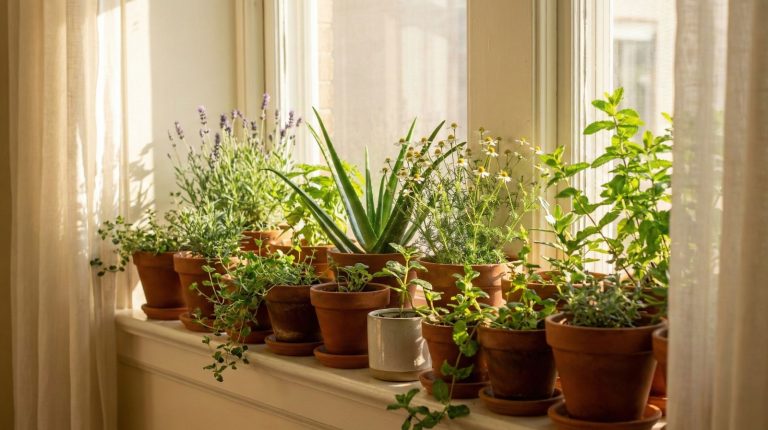You know those people who always talk about their ‘carbon footprint’ and how they’re saving the world one reusable bag at a time? Well, they might seem a little annoying, but they’re onto something – green living! Green living isn’t just a trendy buzzword – it’s a lifestyle that can benefit both you and the planet. And the best part? It’s not as hard as you might think.
Sure, you might not be ready to start composting or install solar panels on your roof just yet. But making small, eco-friendly choices in your everyday life can add up and make a big difference. Whether it’s shopping with reusable bags or swapping out your light bulbs, there are plenty of easy ways to live sustainably. So why not give it a try? You might just find that going green feels pretty good.
What is Green Living All About?
Green living isn’t just about recycling and using reusable bags, it’s a holistic approach to living a sustainable lifestyle that considers the impact of our actions on the environment and our health.
It involves making conscious decisions about every aspect of our lives, from the food we eat to the clothes we wear and the products we use. Sustainable fashion is a big part of green living, and it means choosing clothes made from organic or recycled materials, or even buying second-hand clothes instead of new ones.
Renewable energy is another important aspect of green living, and it involves using energy sources that are replenished naturally, such as solar or wind power.
Conscious consumerism is also a key component of green living. It means being aware of the impact that our purchases have on the environment and choosing products that are eco-friendly, sustainable, and made from renewable materials. This can involve buying products with recyclable or biodegradable materials, or choosing products that are made locally and have a smaller carbon footprint.
Green living is all about making small, mindful choices that add up to a more sustainable and healthy lifestyle.
Now, let’s look at some of the obstacles and solutions to living a greener life.
Obstacles and Sustainable Solutions for Environmental Consciousness
You may face challenges when trying to adopt more environmentally conscious habits, but don’t let these obstacles discourage you. There are sustainable solutions to every problem.
For example, if you find it difficult to reduce your water consumption, consider installing low-flow showerheads and faucets, fixing leaky pipes, and collecting rainwater for household plants and gardening.
Other obstacles, such as the cost of organic foods or the inconvenience of recycling, can be overcome with a bit of planning and creativity. You can save money by buying in bulk, growing your own produce, and repurposing household items. Additionally, you can make recycling easier by setting up designated bins throughout your home and workplace.
Implementing change can be challenging, but it is worth the effort. By making small adjustments to your daily routine, you can reduce your carbon footprint and contribute to a healthier planet. Some simple ways to get started include using reusable bags and water bottles, eating more plant-based meals, and using public transportation or carpooling whenever possible.
Overcoming challenges is possible when you have the right mindset and resources. By taking small steps towards a more sustainable lifestyle, you can make a big impact on the environment and inspire others to do the same.
With these solutions in mind, let’s move on to learn and take steps towards creating a sustainable lifestyle.
Eco-Friendly Living: 8 Tips for a Greener, More Sustainable Life
Whether you’re looking to reduce your carbon footprint or create an eco-friendly home, there are many small steps you can take to help the environment. In the next paragraphs, we will discuss 8 important topics that will teach you how to begin living a more eco-friendly lifestyle.
From eco-friendly gardening tips, to mindful consumption strategies, to creating a sustainable office space, we will provide you with the knowledge and tools you need to make your lifestyle more eco-friendly. So, keep reading to learn more about how you can reduce your environmental impact today!
Eco-Friendly Gardening for a Thriving Oasis
Get ready to transform your backyard into a thriving oasis with these easy-to-implement eco-friendly gardening tips.
First, consider composting techniques to reduce waste and enrich your soil. Start by gathering your organic waste materials, such as fruit and vegetable scraps, coffee grounds, and yard waste, and placing them in a compost bin. Mix the materials periodically and add water to keep the compost moist. Soon, you’ll have a nutrient-rich soil amendment that will improve plant growth and reduce the need for chemical fertilizers.
Next, practice sustainable landscaping by choosing native plants that require less water and maintenance. These plants have adapted to the local climate and soil conditions, making them more resilient and less dependent on chemical fertilizers and pesticides. Additionally, use organic pest control methods, such as companion planting and natural predators, to deter pests without harming the environment.
By implementing these eco-friendly gardening techniques, you can reduce your carbon footprint and enjoy a beautiful, thriving garden. Now, let’s move on to eco-friendly shopping tips to continue your sustainable lifestyle.
🌱 For Self-Sufficient Backyard (Raised Bed + Winter Prep Articles)
🌱 Turn Your Backyard Into a Survival Garden
Raised beds and winter crops are powerful—but imagine taking your entire backyard off the grid. The Self-Sufficient Backyard gives you the exact blueprints to grow food, harvest water, and live independently on any property.
Shopping Eco-Friendly: Tips for Reducing Your Impact on the Environment
When shopping, it’s important to keep in mind the impact your purchases have on the environment and the community around you. One way to reduce your impact is to aim for zero waste. This means looking for products with minimal packaging or packaging that can be recycled or composted.
You can also bring your own reusable bags, containers, and utensils when shopping to reduce single-use plastic waste. Another way to shop more sustainably is to look for ethical products and sustainable fashion. This means purchasing items made with environmentally friendly materials and produced in ethical conditions.
Look for certifications like Fair Trade or GOTS (Global Organic Textile Standard) to ensure the product meets these standards. By making conscious choices when shopping, you can reduce your impact on the environment and support ethical and sustainable practices. With these tips in mind, let’s explore some ways to be mindful and eco-friendly in our consumption habits.
Mindful and Eco-Friendly Consumption: Tips for Sustainable Living
By being mindful of our consumption habits, we can embrace a more conscious and enjoyable way of living. Minimalist living is a great way to start. Simplifying your life means that you only keep the things that are essential and meaningful to you. This way, you reduce your carbon footprint by using fewer resources, and you save money because you don’t buy things you don’t need.
Another way to practice mindful consumption is by choosing sustainable fashion. By supporting eco-friendly and ethical fashion brands, you help reduce the environmental impact of the fashion industry. You can also opt to buy secondhand clothes, which not only saves money but also keeps clothes out of landfills.
Ethical beauty is another area where you can make a difference. Look for beauty products that use natural and organic ingredients, and avoid products that use harmful chemicals. By choosing ethical beauty, you not only take care of the planet but also take care of your health.
When it comes to mindful consumption, there are many areas where you can make a difference. By adopting a minimalist lifestyle, choosing sustainable fashion, and ethical beauty, you can live a more sustainable and fulfilling life.
Next, let’s explore some tips for eco-friendly kitchen practices.
Creating an Eco-Friendly Kitchen: Simple Habits & Sustainable Solutions
Transforming your kitchen into an eco-conscious space can be achieved through simple changes in your daily habits and utilizing sustainable products.
Start by investing in sustainable storage options such as glass jars or reusable containers instead of plastic bags and cling wrap. This not only reduces waste but also keeps your food fresh for longer.
Additionally, consider using energy-efficient appliances such as induction cooktops and refrigerators with an Energy Star label. These appliances use less energy and can significantly reduce your carbon footprint.
Another way to make your kitchen more eco-friendly is to implement composting solutions. Composting your food scraps and yard waste not only reduces landfill waste but also creates nutrient-rich soil for your plants.
You can start small with a countertop compost bin or invest in a larger outdoor composter. By making these changes, you can create a sustainable kitchen that benefits both you and the environment.
As you move forward in your sustainable lifestyle, don’t forget about your bathroom. There are simple swaps you can make to reduce waste and save energy.
Eco-Friendly Bathroom: Simple Tips to Reduce Your Carbon Footprint
Now that you’ve learned some eco-friendly kitchen tips, it’s time to turn your attention to the bathroom. Don’t worry, making your bathroom more sustainable is easy and can make a big impact on the environment.
By implementing these eco-friendly bathroom ideas, you’ll not only reduce your carbon footprint, but you’ll also save money on your water and energy bills.
One of the biggest ways to make your bathroom more eco-friendly is through water conservation. Consider installing a low-flow toilet or showerhead, and fix any leaks as soon as possible. You can also reduce your water usage by turning off the tap while brushing your teeth or shaving.
When it comes to cleaning, opt for natural cleaners like vinegar, baking soda, and lemon juice, which are not only better for the environment but also for your health. Finally, try to switch to plastic-free products like bamboo toothbrushes and refillable soap dispensers to reduce the amount of plastic waste you produce.
You can also make a big difference by choosing natural health products for your hair and body, such as shampoo bars, conditioner bars, and chemical-free body washes made with plant-based ingredients. These products are gentler on your skin and the planet. For example, Naturally Linda offers a range of eco-conscious, handcrafted options that align perfectly with a sustainable lifestyle.
With these simple changes, you’ll be well on your way to a more sustainable bathroom.
And speaking of sustainability, there are plenty of other ways to make your entire home more eco-friendly. From energy-efficient appliances to composting, there are endless possibilities for reducing your environmental impact.
Let’s explore some more eco-friendly home tips together.
Creating a Sustainable Home: Eco-Friendly Tips for a Greener Life
Creating an environmentally conscious home is like planting a seed that will bloom into a beautiful, sustainable oasis. One of the easiest ways to make your home more eco-friendly is to switch to eco-friendly cleaning products.
Traditional cleaning products contain harsh chemicals that can be harmful to both the environment and your health. By switching to eco-friendly cleaning products, you can reduce your carbon footprint while also creating a safer environment for you and your family.
Another way to make your home more sustainable is to incorporate sustainable decoration. This includes using furniture made from recycled materials, using energy-efficient light bulbs, and investing in indoor plants that purify the air. Additionally, you can reduce your energy usage by switching to green energy sources such as solar panels or wind turbines. By making these simple changes, you can create a more sustainable home that not only benefits the planet but also saves you money on your energy bills.
As you make changes around the home, remember that every small step counts towards creating a more sustainable future for all.
As you create a more eco-friendly home, it’s important to extend these practices to your work environment as well. In the next section, we’ll explore some eco-friendly office tips to help you extend your sustainable practices beyond the home.
Creating a Sustainable and Eco-Friendly Office Space
To make your office more environmentally conscious, you should consider implementing these simple tips. First, focus on sustainable decoration by using recycled or upcycled furniture and accessories. This not only reduces waste but also adds character and uniqueness to your workspace. Additionally, consider incorporating plants into your office design to improve air quality and add a natural touch.
Next, invest in energy-efficient devices such as LED light bulbs and smart power strips to reduce energy consumption. Turning off electronics when not in use and opting for laptops instead of desktop computers can also save energy.
Finally, strive for paperless communication by utilizing online tools for meetings, presentations, and document sharing. This not only saves paper but also reduces transportation emissions. By making these simple changes, you can create an eco-friendly office that is both sustainable and functional.
As you make your office more environmentally conscious, don’t forget about the impact of your travel. In the next section, we’ll explore eco-friendly travel tips to help reduce your carbon footprint even further.
Eco-Friendly Travel: Strategies for Reducing Your Carbon Footprint
If you’re looking to reduce your carbon footprint while traveling, consider implementing these eco-conscious tips that will help you go the extra mile in protecting the planet.
First, eco-friendly packing is a must. Instead of using single-use plastic bags, invest in reusable containers and bags. This not only reduces waste but also saves money in the long run. Opt for biodegradable toiletries, such as shampoo bars and toothpaste tablets, to eliminate plastic waste even further.
Next, consider sustainable transportation options. Taking public transportation, walking, or renting a bike are all greener options than driving or taking a taxi. If you must rent a car, choose a hybrid or electric model.
Additionally, choosing green accommodation options, such as eco-friendly hotels or camping, can significantly reduce your environmental impact. Look for hotels that have implemented energy-efficient practices and use renewable energy sources.
As you prepare to travel, keep in mind these eco-friendly tips to help you minimize your carbon footprint. Next up, we’ll explore ways to make your food choices more sustainable.
Eco-Friendly Food Tips for a Sustainable Future
By incorporating simple changes to what you eat, you can make a positive impact on the planet and feel better about the food you consume. One of the easiest ways to do this is by practicing seasonal eating.
This means consuming fruits and vegetables that are in season in your local area, as they require less energy to produce and transport than those that are out of season. Not only does this help reduce greenhouse gas emissions, but it also supports local farmers and promotes biodiversity.
Another way to make eco-friendly food choices is by adopting a plant-based diet. Animal agriculture is a significant contributor to greenhouse gas emissions and deforestation, making it one of the most environmentally damaging industries in the world.
By reducing your consumption of animal products and incorporating more plant-based meals into your diet, you can help reduce your carbon footprint and improve your overall health.
Additionally, choosing locally sourced foods can further reduce the environmental impact of your diet by reducing transportation emissions and supporting local communities. By making these small changes to your food choices, you can contribute to a more sustainable future while also enjoying delicious and nutritious meals.
🌱 For Self-Sufficient Backyard (Raised Bed + Winter Prep Articles)
🌱 Turn Your Backyard Into a Survival Garden
Raised beds and winter crops are powerful—but imagine taking your entire backyard off the grid. The Self-Sufficient Backyard gives you the exact blueprints to grow food, harvest water, and live independently on any property.
Green Living FAQs
How can I encourage my community to adopt green living practices?
Coincidentally, your community desires sustainable living. Engage them through educational programs, sustainable events, and recycling campaigns. Implement green infrastructure to support eco-friendly choices. Create a sense of belonging through collective action towards a greener future.
What are some innovative eco-friendly products that can make a difference?
You can make a difference with eco-friendly innovations like reusable packaging, solar-powered gadgets, compostable cutlery, green cleaning products, and sustainable fashion. These products are technical, factual, and solution-oriented for a conscious audience with a desire for belonging.
How can I reduce my carbon footprint when traveling by plane?
Reduce your carbon footprint when traveling by plane by packing sustainably, using carbon offsets, choosing alternative transportation, staying in eco-friendly accommodations, and practicing conscious consumption. Make a positive impact on the environment and feel a sense of belonging to the global community.
What are some ways to incorporate sustainable living into my daily routine as a busy professional?
You can incorporate sustainable living into your busy routine by making eco-friendly commutes, choosing sustainable fashion, using green cleaning products, preparing zero waste meals, and using renewable energy sources. Join the movement towards a healthier planet.
How can I ensure that my green living choices are truly making a positive impact on the environment?
To ensure your green living choices make a positive impact, start with an eco-friendly home and invest in renewable energy. Adopt a zero waste lifestyle, practice sustainable fashion, and choose green eating options. Join a community of like-minded individuals for support.
How can I reduce my carbon footprint while working from home?
Green commuting and using energy-saving gadgets can reduce your carbon footprint while working from home. Utilize eco-friendly transportation options and invest in energy-efficient technology to make your home office more sustainable.
Are there any eco-friendly alternatives to traditional cleaning products?
To reduce the environmental impact of traditional cleaning products, consider using green cleaning alternatives such as homemade recipes and natural brands. Benefits of using eco-friendly cleaning products include improved indoor air quality and reduced exposure to harmful chemicals.
What should I do with old furniture that I no longer want?
For old furniture, consider donation options such as local charities or online platforms. Upcycling ideas include repurposing items for an alternative use, or refurbishing to give new life. Avoid contributing to landfill waste by exploring these alternatives.
How can I make my home more energy-efficient without breaking the bank?
Smart home automation and DIY insulation are two cost-effective ways to make your home more energy-efficient. These solutions can help reduce energy consumption and lower utility bills without breaking the bank.
Conclusion
Living an eco-friendly lifestyle not only benefits the environment but also promotes healthier and more sustainable homes. By implementing green routines and sustainability practices, we can reduce our carbon footprint and contribute to a cleaner planet. Recycling old electronics, using clean energy, and connecting with loved ones face-to-face are just a few ways to make our homes more sustainable.
Moreover, incorporating eco-friendly practices in our daily routines and homes can have a significant impact on the environment. According to the United Nations, the world generates 2.01 billion tons of municipal solid waste annually, with that number expected to increase to 3.40 billion tons by 2050. This means that without proper waste management and recycling efforts, our planet will be drowning in waste, leading to severe environmental consequences.
Therefore, it is crucial to adopt sustainable practices such as reducing waste, using energy-efficient appliances, and conserving water to reduce our carbon footprint and promote a cleaner planet. By making small changes in our daily routines and homes, we can create a more environmentally friendly future for ourselves and generations to come.




